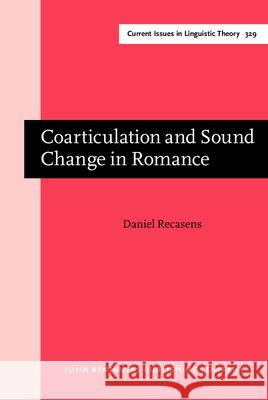Coarticulation and Sound Change in Romance » książka
Coarticulation and Sound Change in Romance
ISBN-13: 9789027248480 / Angielski
This volume should be of great interest to phoneticians, phonologists, and both historical and cognitive linguists. Using data from the Romance languages for the most part, the book explores the phonetic motivation of several sound changes, e.g., glide insertions and elisions, vowel and consonant insertions, elisions, assimilations and dissimilations. Within the framework of the DAC (degree of articulatory constraint) model of coarticulation, it clearly demonstrates that the typology and direction of these sound changes may very largely be accounted for by the coarticulatory effects occurring between adjacent or neighbouring phonetic segments, and by the degrees of articulatory constraint imposed by speakers on the production of vowels and consonants. The phonetically-based explanations presented here are formulated on the basis of coarticulation data from speech production and perception research carried out during the last fifty years and are complemented with data on the co-occurrence of phonetic segments in lexical forms of the languages being considered. Attention is also paid to the role that positional and prosodic factors play in sound change implementation, as well as to the cognitive and peripheral strategies involved in segmental replacements, elisions and insertions.











